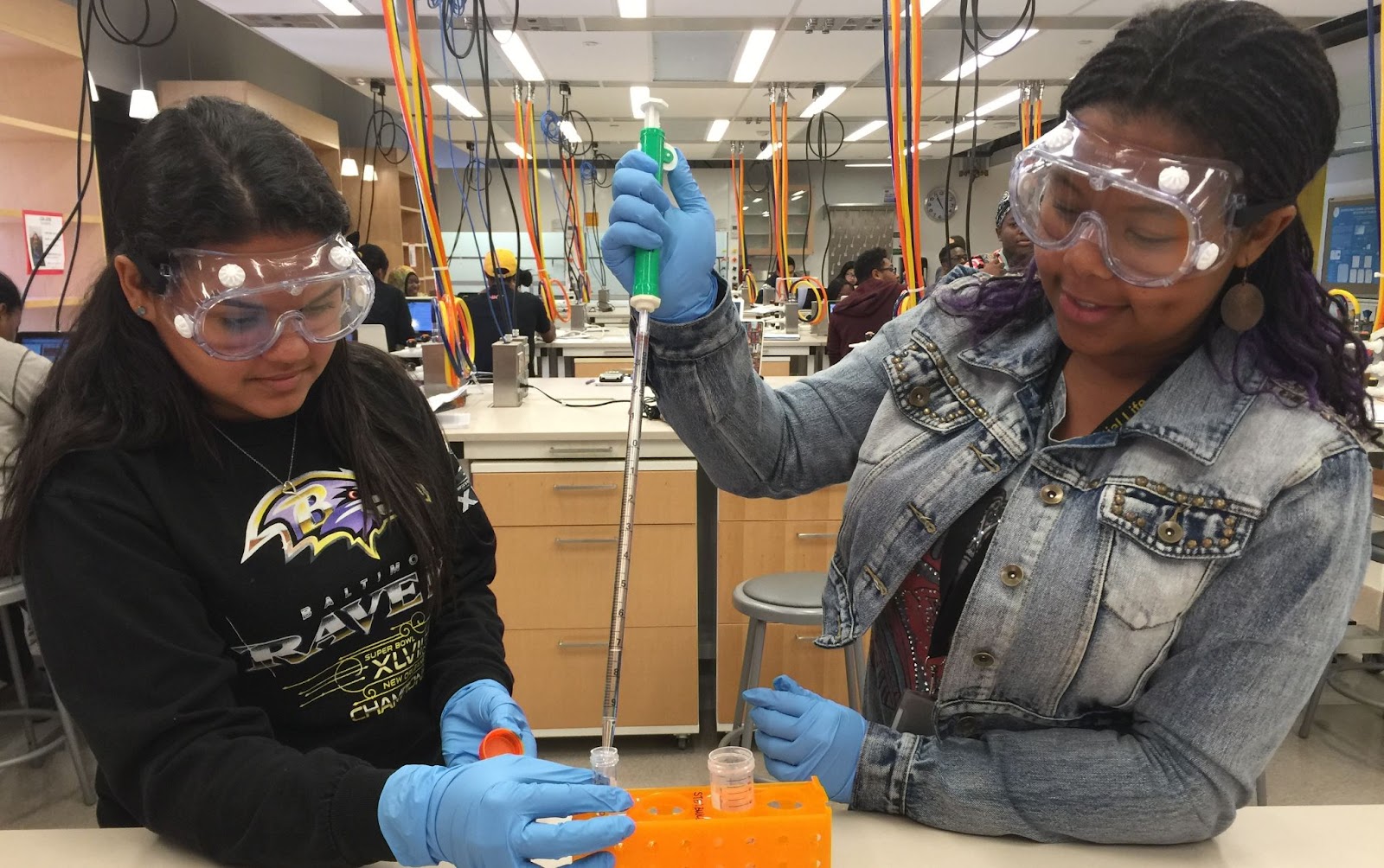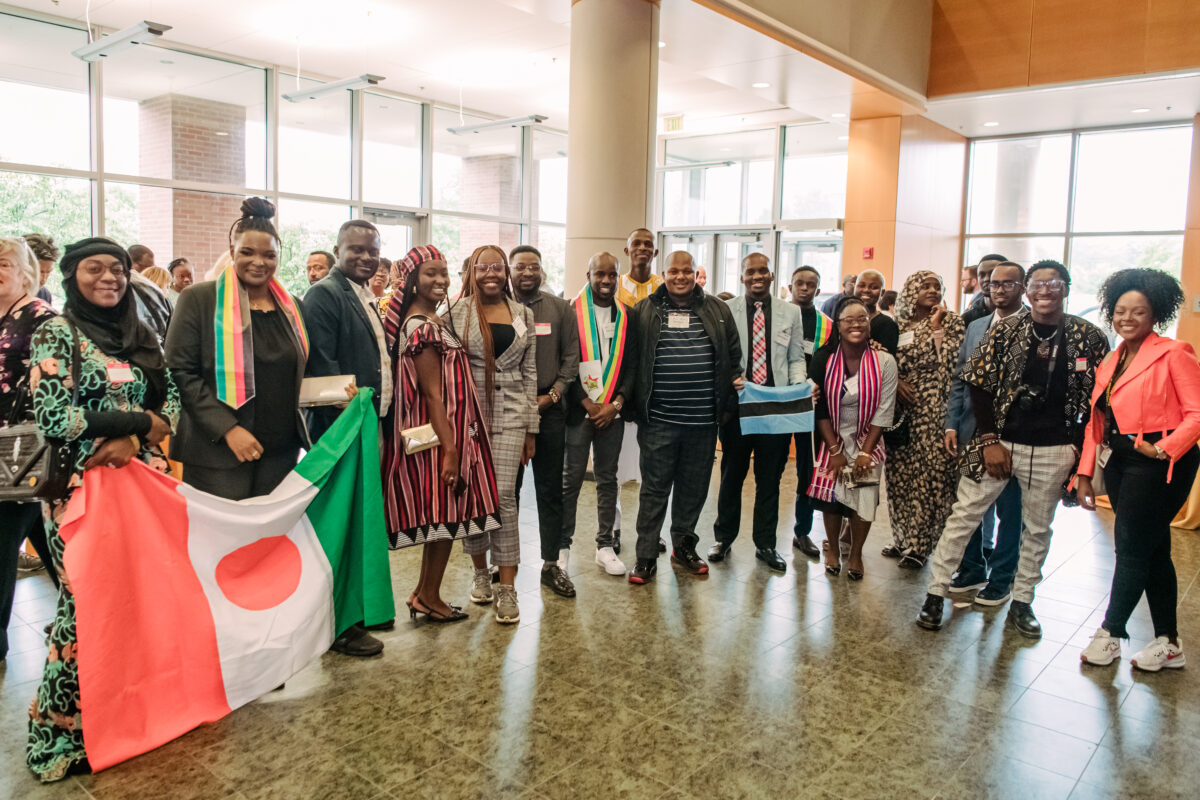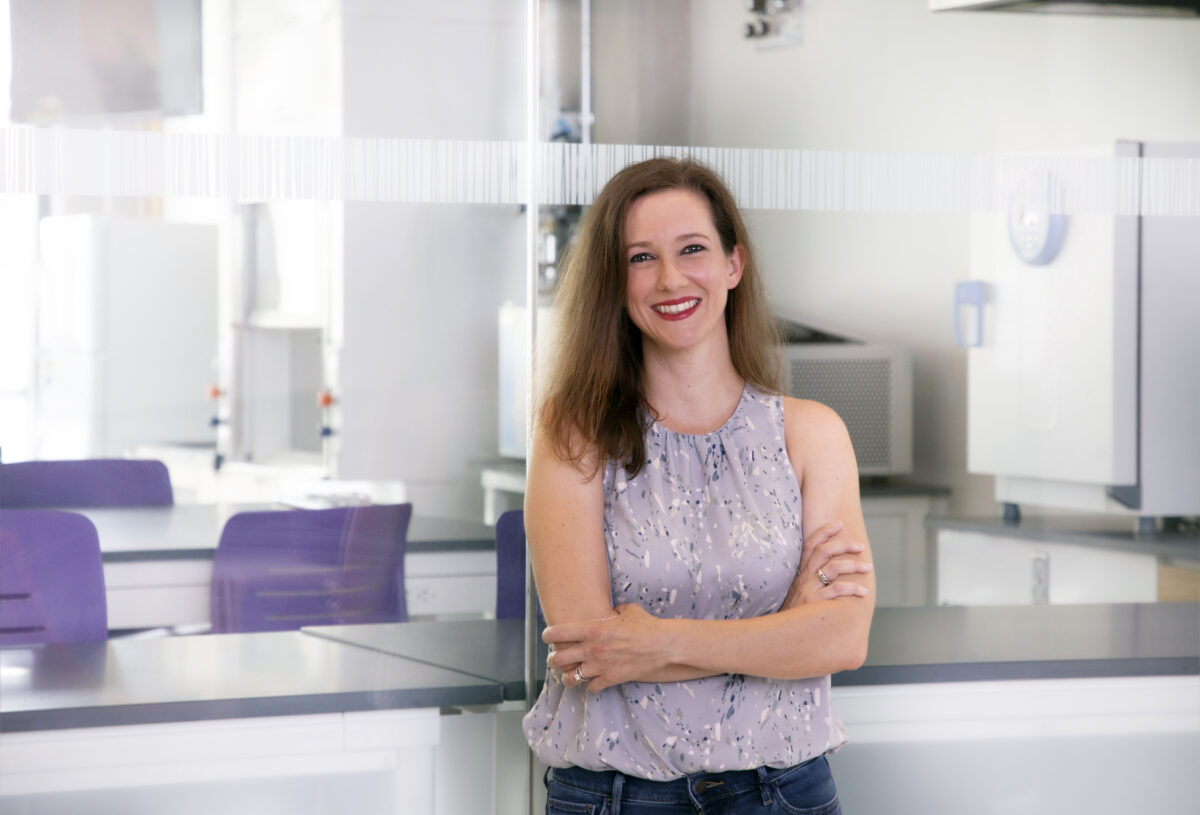From its outset, UMBC’s STEM BUILD—a 10-year undergraduate success initiative and research study at UMBC funded by the National Institutes of Health—has had a unique vision: To emphasize the inclusive reach of the program, STEM BUILD’s motto is “500, not 50.”
The program, which is wrapping up its timeline, was created to identify effective interventions that could be implemented at scale to support all science, technology, engineering and math (STEM) students at UMBC, and to find ways to continue those interventions beyond the existence of STEM BUILD.
“Looking back on nearly 10 years of work, STEM BUILD has been nothing short of wildly successful,” said Justine Johnson, executive director of STEM BUILD and assistant dean for inclusive excellence in the College of Natural and Mathematical Sciences (CNMS).
A research study to support budding researchers
STEM BUILD was carefully designed as a controlled research study, where evaluators randomly assigned students accepted into the program into three cohorts: Trainee, Living Learning Community (LLC), and Comparison.
BUILD Trainees benefited from the most interventions, such as monthly community meetings, intensive monitoring and advising, and multiple group research experiences during “Summer Bridge” programming. Another cohort lived on campus in the STEM Living Learning Community (LLC)—which did not exist prior to STEM BUILD—along with the Trainees, but did not receive additional interventions. A third cohort consisted of similarly qualified students who did not receive targeted interventions or live in the STEM LLC.
According to an analysis by the evaluation team, by the end of their fourth year at UMBC, BUILD Trainees had increased their reported sense of “research self-efficacy,” or their own understanding of their competency as researchers, from 3.50 to 3.87 on a five-point scale, which registered at the highest level of statistical significance. Students in the other two cohorts shifted from 3.66 to 3.61, which was not statistically significant.
Victoria Baskerville ’19, biological sciences, and a BUILD Training program alumna, said the research experiences provided by the program were invaluable.
“They gave me the confidence to navigate in a lab space and gave me the competitive edge I needed to get my position as a technician in a prestigious lab,” said Baskerville, who is currently pursuing her Ph.D. in integrative and biomedical physiology at The Pennsylvania State University.
“I have often received positive comments regarding the amount of research experience I gathered as an undergraduate during interviews,” Baskerville said.
The percentages tell the story
Victor Omoniyi ’20, biological sciences, a former STEM BUILD Trainee, is currently pursuing a Ph.D. in neuroscience at Johns Hopkins University, in the cellular and molecular medicine program.
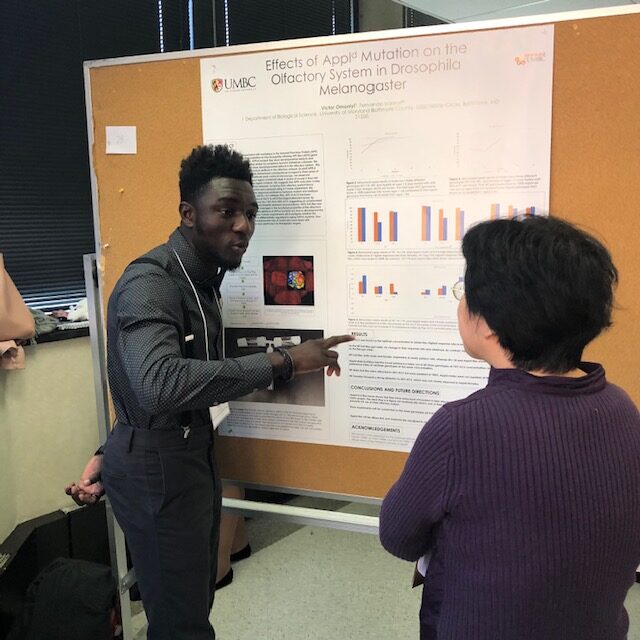
“BUILD was helpful in starting my scientific journey and exposing me to different areas of research and people to network with, which has contributed significantly to where I am now, pursuing a Ph.D.,” Ominiyi said.
Ominiyi’s experience is not unique among Trainees. BUILD Trainees reported completing significantly more research experiences than students in the comparison groups: 45.4 percent completed one to three research experiences, 33.7 percent participated in four to six research experiences, and 9.9 percent completed seven or more research experiences. That’s compared to 53.1 percent, 10.6 percent, and 1.9 percent, respectively, in the comparison groups. Those experiences build students’ confidence with research and nurture relationships with mentors, which likely contribute to students choosing to remain in STEM and pursue graduate education.
Outcomes for BUILD Trainees in cohorts one through five, as of fall 2023, were similarly outstanding, with 56 percent of Trainees having completed a bachelor’s degree, 16 percent having completed or being enrolled in a master’s program, 13 percent attending professional school, and 11 percent pursuing Ph.D. or M.D./Ph.D. programs. All together, 96 percent of Trainees completed their undergraduate degrees, and 40 percent are actively pursuing or have completed an advanced degree.
Bridging the success beyond CNMS
STEM BUILD’s impact goes far beyond its direct benefits to BUILD Trainees. UMBC’s College of Natural and Mathematical Sciences has implemented numerous new programs as part of STEM BUILD that will continue supporting all students after BUILD officially ends—meeting the “500, not 50” goal.
For example, the Active Learning, Inquiry Teaching (ALIT) certificate program is designed to support faculty in adopting teaching approaches that foster the retention of students in STEM majors and support the development of their students as STEM professionals. Initially required for BUILD faculty mentors, today the program is available to all faculty in CNMS and UMBC’s College of Engineering and Information Technology, and a related program inspired by ALIT now also exists in the College of Arts, Humanities, and Social Sciences.
CNMS also developed new courses and summer programs, initially targeting STEM BUILD students but now open to all, focusing on ethics, communication skills, introductory laboratory skills, and more.
CNMS hired a success coach, who offers on-demand mentoring for students in skills like time management, exam preparation, and stress reduction. The coach also offers workshops through The Learning Collaboratory (TLC), another new CNMS initiative. A diversity mentoring program matches STEM students with mentors in STEM from underrepresented backgrounds.
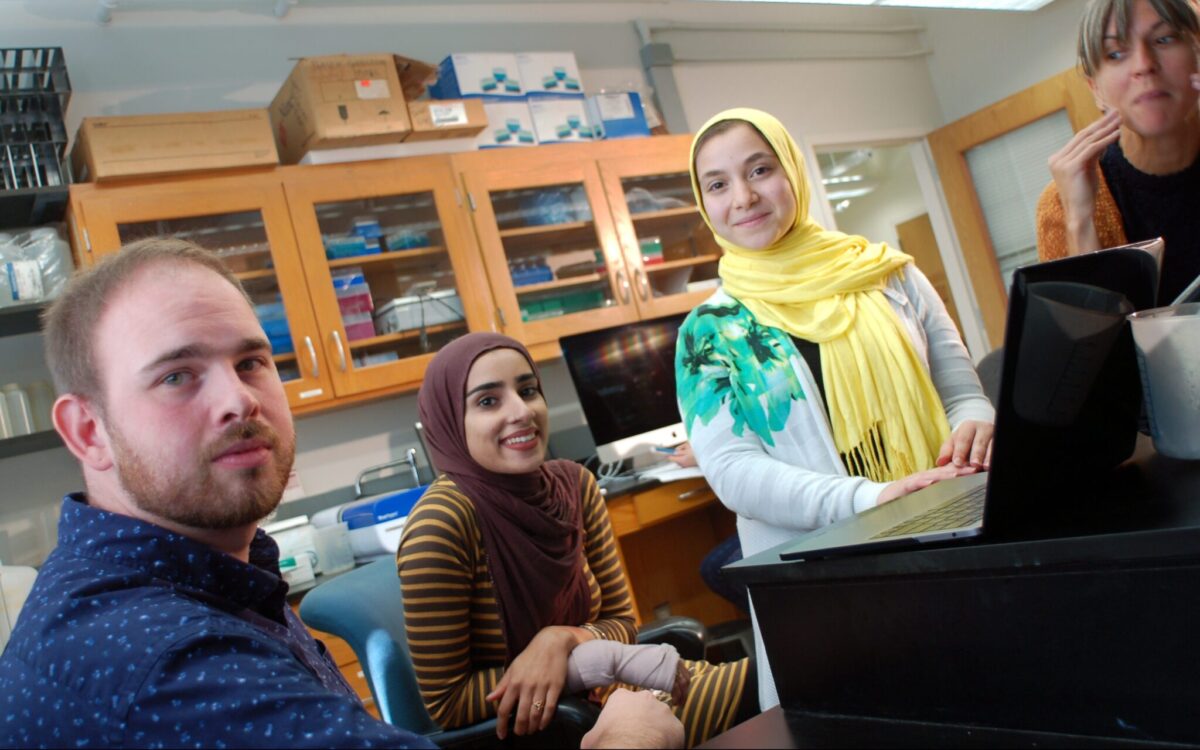
BUILD has even benefited students who attend other universities.
The BUILD a Bridge to STEM Internship has offered students the opportunity to spend the summer at UMBC, learning laboratory skills and then working in small groups to conduct research with UMBC faculty members and present at UMBC’s Summer Undergraduate Research Fest. Students from regional community colleges, Morgan State University, and Gallaudet University all participated, the latter with the full-time support of ASL interpreters.
Long-lasting, sustainable change
Though STEM BUILD’s 10 years are coming to an end, the institutional change the program has enabled will endure at UMBC.
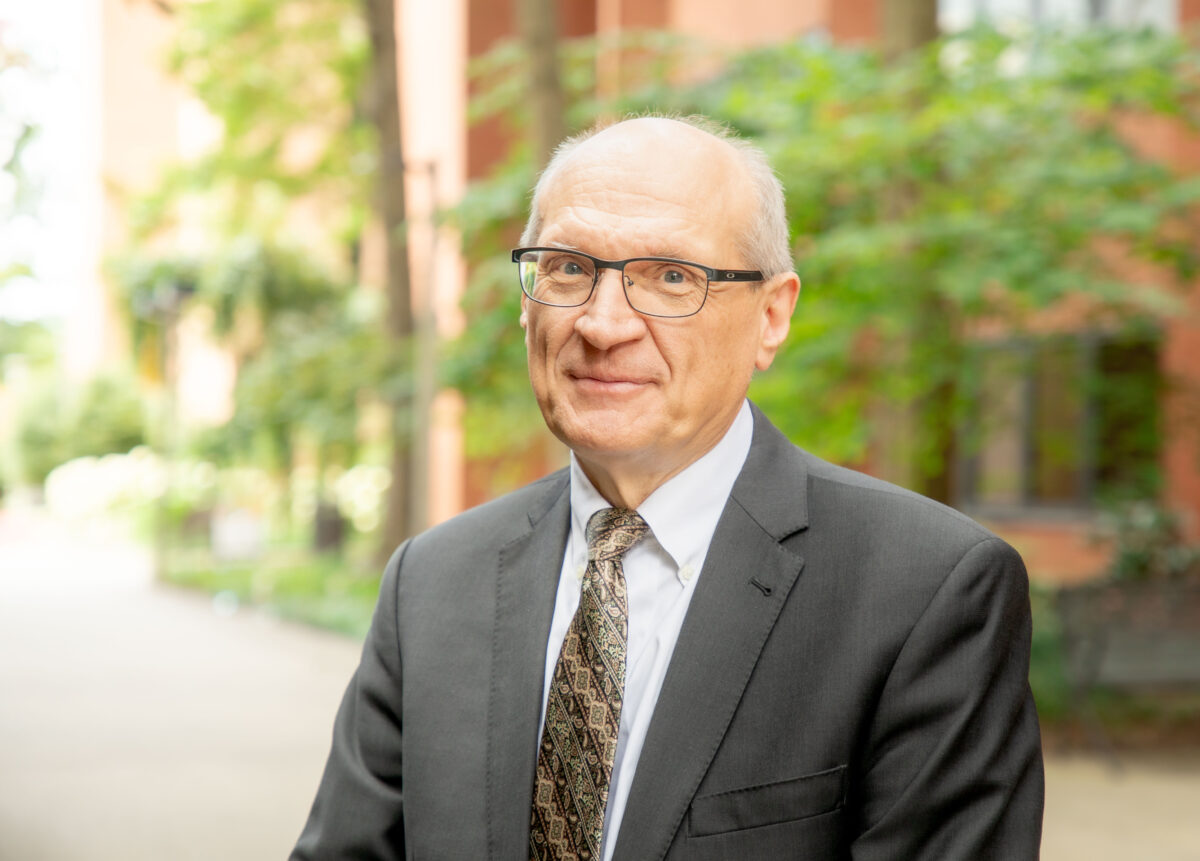
STEM students will have access to more and better training and professional development opportunities, faculty are employing more effective teaching and mentoring strategies, and scaffolded research experiences are available to prepare students for further study, explained William R. LaCourse, CNMS dean.
As the ideator and champion of many STEM BUILD initiatives that will continue, LaCourse is thrilled to see the impact those initiatives are having on students’ experiences and trajectories.
“It has been my passion and purpose to support all students, especially those who are in the middle of the achievement curve when they arrive at UMBC,” LaCourse said. “The STEM BUILD program showed that every student has the potential to excel as a scholar, if given the opportunity and support. By infusing the interventions developed in STEM BUILD into the four-year curriculum for all students, maybe our motto should have been ‘5,000, not 50.’”

